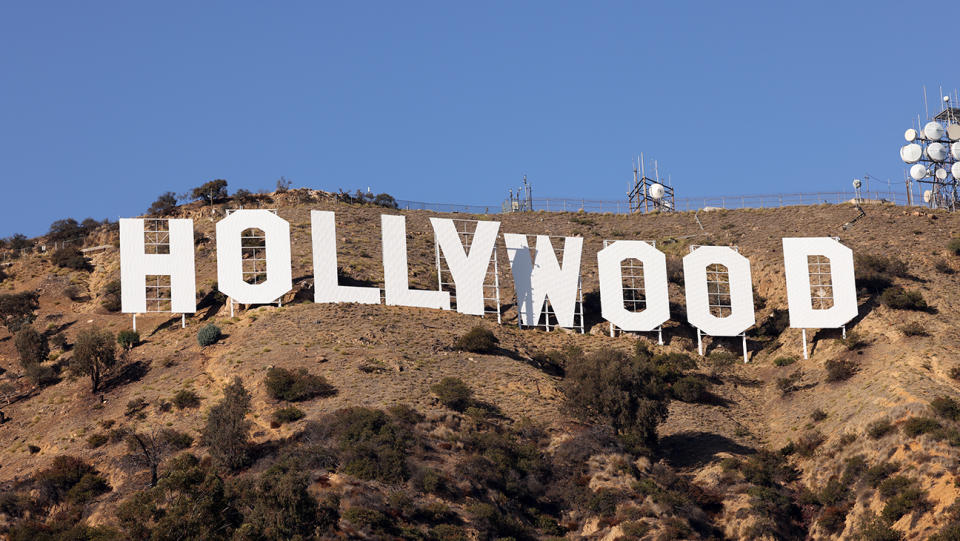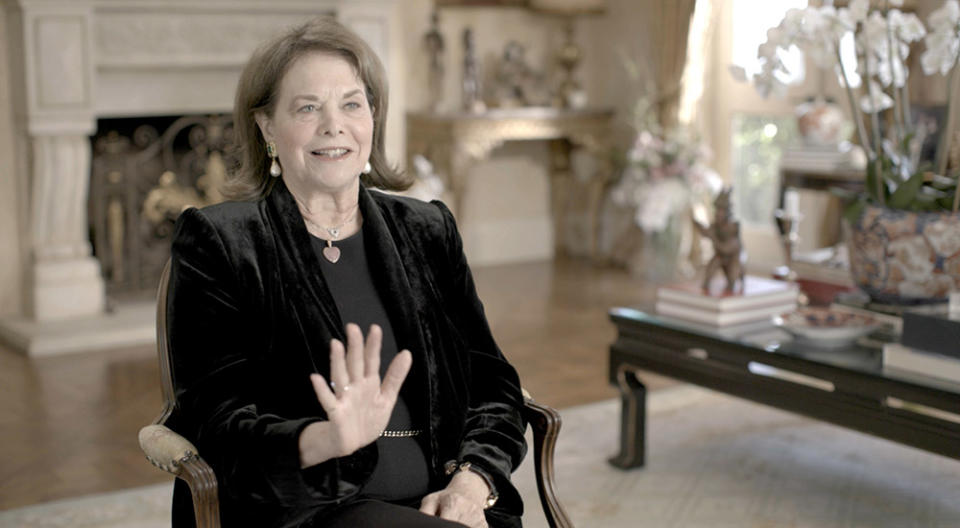PBS Series ‘Iconic America: Our Symbols and Stories’ Unearths History of the 100-Year-Old Hollywood Sign
- Oops!Something went wrong.Please try again later.

The Hollywood Sign is as much a marker of location as it is a marker of industry. First erected 100 years ago as “Hollywoodland,” the bold, mountain-bound letters are a bona fide fixture of Los Angeles’ landscape, and have impacted the way the city has expanded — and the visual language of the films made in its shadow — forevermore. In a new PBS series, Iconic America: Our Symbols and Stories with David Rubenstein, the Hollywood sign is the focus of one of the show’s eight episodes, which explore American history through significant national symbols.
“This is designed to use the medium of television, which is a very effective medium in getting things through, by taking eight iconic symbols geographically dispersed around the country, and saying: ‘Here’s what you don’t know about these symbols. Here’s what you should know. And why don’t you try to read a little bit more about it and get to know even more?'” David M. Rubenstein — co-founder of The Carlyle Group, patriotic philanthropist (who owns a copy of the Magna Carta and has it on permanent loan to the National Archives) and the series’ host and executive producer — tells The Hollywood Reporter. “The Hollywood Sign is a symbol that means a lot to people because you don’t have Hollywood signs anywhere else in the world… Only in America, and only in L.A.”
More from The Hollywood Reporter
Hulu With Live TV Adds PBS, PBS Kids, Magnolia Network to Lineup
Former ABC News/Disney Exec Marie Nelson Named Hot Docs Fest President
The hour-long episode on the sign that was originally designed as a real estate advertisement premiered this week and is available to watch online; the subjects of the series’ other seven episodes — which will be released in a rollout schedule over the next couple months — are Fenway Park, the Gadsden Flag, the American Cowboy, the Statue of Liberty, the American Bald Eagle, Stone Mountain and the Golden Gate Bridge.

And while PBS’ Iconic America is an entertaining, accessible approach to history, Rubenstein’s commitment to helping educate the American public is a high-stakes pursuit. “For the last 10 to 15 years or so, I’ve been fairly involved in trying to preserve American historic documents and buildings: Mount Vernon, Monticello, the Lincoln Memorial, things like that. And part of that effort is designed to educate Americans more about our history on the theory that you should have an informed citizenry if you’re going to have a representative democracy that really works,” he says. “That was the theory of setting up our government: You’d have an informed citizenry. But we now know that we as a people don’t take history very much in school. History majors are down to two percent of college majors. And the result is, people don’t know much.”
Maro Chermayeff, an executive producer on the show and partner at Emmy Award-winning production company Show of Force, says that starting to create this programming some two years ago, during a time when monuments were being removed and the American public was starting to recontextualize historical objects, was a fruitful foundation for a show on symbols and their cultural impact. “Maybe this is a great way to touch upon history, but also talk about how history and the symbols of history have changed over time,” Chermayeff says. She adds, “And they mean different things to different people. And their meanings change based on what’s going on in social, cultural and political elements.”
Filming for the Hollywood episode began in the fall of 2021, and saw Rubenstein on location and in conversation with a range of historical thinkers, community members and experts on topics such as film and real estate.
“We interviewed people who were experts in how Los Angeles came together as a city, [and] how would-be Hollywood was a separate kind of subsidiary area, and then later got merged into Los Angeles,” Rubenstein says. “We talked to people in the movie industry, because they are the people that are the living embodiment of what people around the world think of as Hollywood, which is the people who have made movies, or people that have produced movies, or been in movies.”
Former Paramount Pictures CEO Sherry Lansing, CEO of Orion Pictures Alana Mayo, sociologist and author Nancy Wang Yuen, Melissa Rivers and Sylvester Stallone are all featured in the segment.

“What I love about [the Hollywood sign] is that it was a symbol that was the word, and that word then became the symbol,” Chermayeff says. “It became a way, as [with] every episode in the series, to take that symbol, and allows you to have all sorts of discussions. We were talking about real estate, we were talking about art, we were talking about how a city builds. Hollywood was just an open book because it hangs over Hollywood. It shadows the city, so you can really talk about whatever you want. And there’s so much to talk about in Hollywood.”
The shadow play the sign creates against the earth it rests on offered pathways to discussing the importance of light and darkness in the film noir genre with writers like James Ellroy. And conversations with Hollywood real estate agent Josh Flagg unpacked real estate speculation and how a city — and its central industry — are designed.
“I think it was the one episode where it was really about: When does the symbol represent collective aspiration? And what does that mean?” Chermayeff muses. “Because that’s not true of any other thing.”
Best of The Hollywood Reporter

